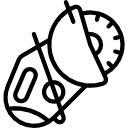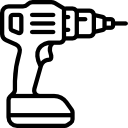- اتو لوله سبز
- اره پروفیل بر
- اره عمودبر (اره چکشی)
- اره فارسی بر
- اره گرد (اره دیسکی)
- اره مویی
- اره میزی
- اره نواری (گوشت بری)
- اره همه کاره (افقی بر)
- ابزار چندکاره
- بالابر برقی
- بتن ساب و موزایک ساب
- بکس برقی
- پیچگوشتی برقی
- پیستوله برقی
- بیسکویت زن
- چکش تخریب
- دمنده/مکنده (بلوور)
- دریل بتن کن
- دریل ساده (سرکج)
- دریل ستونی
- دریل ضربه ای/چکشی
- دریل مغناطیسی (مگنتی)
- دریل نمونه بردار (کرگیر)
- دستگاه جوش
- رنده و فرز نجاری
- سنباده برقی
- سشوار صنعتی
- سنگ دوطرفه (چرخ سنباده)
- سنگ و پولیش
- شیارزن و مرمربر
- فرز مینیاتوری
- فرز انگشتی
- میخکوب و منگنه کوب
- مینی سنگ
Identifying and Addressing Main Sewer Line Issues – A Comprehensive Guide
Understanding the condition of your main sewer line is crucial for maintaining a healthy home environment. Many homeowners might not notice problems until they become significant issues, causing discomfort and costly repairs. One of the first signs that something may be wrong with your sewer system can be detected through camera inspection. This advanced technique allows professionals to see inside the pipes, revealing potential obstructions or damage that could lead to serious complications.
Another key indicator of a failing sewer line can be tree root damage. Roots from nearby trees are known to infiltrate sewer pipes, leading to blockages and breakages. If you notice any unusual clogs, it might be worth investigating whether tree roots are the culprit. Additionally, homeowners should keep an eye out for yard wet spots. These wet areas can signal leaks in the sewer line or problems with drainage, both of which require prompt attention.
Identifying Signs of a Blocked Sewer Line
Recognizing the symptoms of a blocked sewer line can save you from serious plumbing issues. One of the most common signs is the presence of backflow symptoms. This occurs when wastewater flows back into sinks, tubs, or toilets, indicating an obstruction in the sewer line.
Another indicator of a sewer line blockage is slow drainage. If multiple fixtures are draining slowly, it may suggest a developing issue within the main line. Additionally, gurgling noises from pipes can be a warning sign. This often happens as air is trapped in the system due to a blockage, resulting in unusual sounds during drainage.
You may also notice foul odors emanating from drains or around your property. Unpleasant smells can indicate a build-up of waste material that is unable to flow freely. Furthermore, wet spots or pools of water in your yard could point to a serious blockage, possibly leading to a sewage leak.
If you experience any combination of these warning signs, it may be time to consult a plumbing professional to assess the situation and prevent further damage.
Common Causes of Main Sewer Line Problems
Main sewer line issues often arise from various factors that can lead to significant problems in your plumbing system. Understanding these common causes can help you take preventive measures and avoid costly repairs.
- Tree Roots: Invasive roots can penetrate sewer lines, causing blockages and damage. Regular camera inspections can help identify root infiltration early.
- Debris Accumulation: Over time, materials such as grease, soap, and foreign objects can accumulate in the pipes, resulting in multiple drain clogs and eventual system backups.
- Pipe Cracks and Breaks: Aging pipes can develop cracks due to pressure or ground movement, leading to leaks and backflow symptoms that can exacerbate existing issues.
- Foul Smells: Unpleasant odors near drains or in your yard may indicate a sewer line issue. These smells often result from sewage buildup or breaches in the pipe.
- Improper Installation: Incorrect plumbing installations can cause future drainage issues, such as gurgling drains and blockages, leading to overall system inefficiency.
Regular maintenance and monitoring are key to preventing main sewer line issues. If you suspect a problem, consider professional help. You can learn more about plumbing services at https://noproblemplumbingandrooting.com/.
How to Perform a Basic Sewer Line Inspection
Conducting a basic sewer line inspection can help you identify potential issues before they become serious problems. Begin by walking around your property to look for any unusual yard wet spots. These can indicate a potential sewer leak or backup.
Next, check your drains for any gurgling sounds. These noises often suggest that air is trapped in the plumbing due to blockages in the sewer line. Pay attention to how quickly the water drains; slow drainage can be an early warning sign of issues.
Foul smells near drains or in your yard can indicate a sewage problem. If you detect unpleasant odors, investigate further to determine the source. It may be necessary to check your cleanout access points for any visible signs of blockage.
Another common issue to consider is tree root damage. If you have trees near your sewer line, their roots may infiltrate the pipes, causing obstructions. Inspect areas near large trees for any signs of growth or displacement in the soil that may suggest roots are affecting the sewer line.
Taking these steps will help you gauge the condition of your main sewer line and facilitate timely intervention if issues arise.
When to Call a Professional Plumber for Help
If you notice signs of a main sewer line issue, it is critical to seek professional assistance at the right time. Ignoring problems can lead to severe system backup and costly repairs.
Experiencing slow flush in multiple fixtures or gurgling drains indicates potential blockages. These symptoms often worsen if not addressed quickly. A professional plumber has the expertise to diagnose and resolve these issues effectively.
Another sign that warrants a call is if you detect foul smells coming from drains or around your property. This unpleasant odor can be a warning of a sewer line breach or significant obstruction.
In situations where you find yard wet spots or unusually lush patches of grass, it could suggest a leak in the sewer line. A plumber can conduct a thorough inspection, which may include camera inspection technology to identify the problem’s source.
Lastly, if you’ve attempted basic troubleshooting without success, it’s wise to contact a professional. Their tools and knowledge ensure that any sewer line issue is effectively diagnosed and resolved, preventing further complications.




